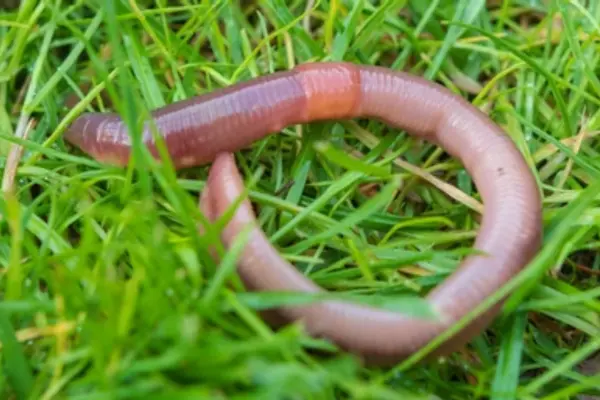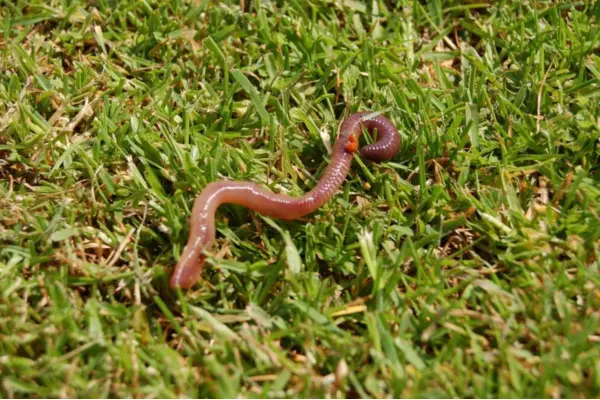Earthworms are typically viewed as garden heroes. They improve soil health, help plants thrive, and aerate the ground.
However, if you find yourself with too many earthworms in your lawn, they can cause problems by creating bumpy surfaces, over-fertilizing, and even stunting plant growth.
In this article, we’ll discuss how to get rid of earthworms in my lawn, effective ways to manage earthworms in your lawn while keeping the ecosystem in balance.
Why Are Earthworms Important?

Benefits of Earthworms in Your Lawn
Earthworms are a sign of healthy soil. They consume decaying organic matter like leaves and dead plants, breaking it down into rich nutrients that enhance soil fertility. This process, called vermicomposting, helps to naturally fertilize your lawn, reducing the need for chemical fertilizers. Here’s why earthworms are essential:
Aeration: Earthworms burrow through the soil, creating tunnels that allow oxygen to penetrate the ground. This benefits plant roots by promoting better air and water flow.
Improved Drainage: These burrows also act as channels for water, allowing rain to soak into the soil rather than sitting on the surface, which reduces the risk of waterlogging.
Nutrient Cycling: Earthworms eat organic matter, which is then excreted as nutrient-rich castings. These castings enrich the soil and boost plant growth.
Pro Tip: If you see a few earthworms in your soil, there’s no need to take action. It means your soil is healthy and balanced.
When Do Earthworms Become a Problem?

While earthworms are generally beneficial, having too many can cause issues. Overpopulation can lead to:
Bumpy Lawns: Earthworms leave castings (worm waste) on the surface of your lawn, which can create uneven, bumpy areas that are difficult to mow.
Over-fertilization: Too many earthworms in a small space can lead to over-fertilization. This can burn your plants and cause them to struggle, much like overusing synthetic fertilizers.
Root Disruption: Excessive burrowing can disturb plant roots, affecting their ability to absorb water and nutrients. This can result in weakened or stunted plant growth.
Signs of Too Many Earthworms:
Numerous mounds or small soil piles on the lawn (earthworm castings).
Patches of grass turning brown or struggling to grow.
Visible worm populations surfacing frequently after rain.
Non-Lethal Ways to Get Rid of Earthworms
The goal is to manage earthworm populations, not eradicate them entirely. Luckily, there are gentle, non-lethal ways to reduce their numbers.
Using Ground Mustard to Repel Earthworms
One eco-friendly option is using ground mustard as a natural repellent. Mustard irritates earthworms’ skin, forcing them to the surface where you can collect them.
Here’s a simple guide to making and applying mustard solution:
| Materials Needed | Steps |
|---|---|
| 1 cup of ground mustard | 1. Fill a bucket halfway with water. |
| 2 buckets | 2. Add 1 cup of ground mustard to the water. |
| Water | 3. Stir until the mustard dissolves. |
| Garden gloves | 4. Pour the mixture over the affected soil. |
| Garden trowel or shovel | 5. Earthworms will surface in response. |
| 6. Wearing gloves, pick up the earthworms and place them in the spare bucket for relocation or disposal. |
Note: This method is gentle on the surrounding plants and soil. Mustard won’t harm your garden, making it a safe, eco-friendly solution.
Collecting Earthworms After Rain
Rain naturally drives earthworms to the surface, giving you an easy opportunity to reduce their population.
After a rainfall, check your lawn for surfaced earthworms.
Using gloves, collect them into a bucket for removal.
Why It Works: Earthworms breathe through their skin, and heavy rain forces them above ground to avoid drowning. This is a non-invasive, natural way to reduce worm numbers.
Lethal Methods for Earthworm Removal
Using Vinegar to Kill Earthworms
If you need a more immediate solution, vinegar can be effective in killing earthworms. However, it’s important to note that vinegar is not selective—it can harm plants and soil as well.
How to Use Vinegar Safely:
Fill a spray bottle with either white or apple cider vinegar.
Spray directly onto visible earthworms.
Take care to avoid spraying plants, as vinegar can kill them as well.
Caution: Vinegar should be used as a last resort due to its impact on both worms and plants. Try non-lethal methods first.
The Risks of Overusing Chemical Solutions
Using chemical pesticides or herbicides to kill earthworms can have unintended consequences. Chemicals often remain in the soil, harming beneficial organisms and plants. They can also contaminate groundwater and pose risks to pets and children.
Alternatives to Chemicals:
Stick to natural solutions like mustard or manual removal.
Limit chemical use to targeted areas if absolutely necessary.
Conclusion
Earthworms play a critical role in maintaining healthy soil, but too many can cause problems for your lawn. Whether you opt for eco-friendly repellents like mustard or use more direct methods like vinegar, it’s important to balance earthworm populations without harming the environment. By encouraging natural predators, maintaining a healthy lawn, and using gentle repellent methods, you can manage your lawn’s earthworm population effectively.
Frequently Asked Questions
Why are there so many earthworms in my lawn after it rains?
Rain causes earthworms to surface to avoid drowning, making them more visible.
Will getting rid of earthworms hurt my lawn?
Removing excessive earthworms can actually help your lawn by reducing over-fertilization and preventing root disruption.
Can earthworms damage my lawn’s root systems?
Yes, too many earthworms can burrow around roots, causing stress to plants.

